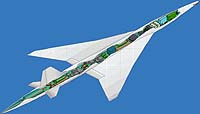You are a hypocrite, first you gang up against Samuraiblue, then you prentend to be the cool guy innocent, hypocrite, if you do not bring China do not compare it with Japan, Japan only should be then not compared to no one and you should not be saying Saying they are not ahead, since obviously in civil programs Japan is one of the main countries, anti terror said Malaysia, China and you hypocrite you did not say anything to him, hypocrite complain about him too also about equation who also mentioned China, you are a hypocrite who in your Chinese pride fight Samurai blue
Firstly, do you remember there was a time not long ago in J-20 thread when many members argued with you? Does that constitute gang up against you? So in your dictionary, disagreement equal to gang up? I don't expect you answering these questions though, as you won't see the questions.
Secondly, do you know what you are talking about? My post was about SB's erroneous claim of Japan's involvement in LEAP engine, which was the very texts of mine that you joined in. This matter involve France, U.S.A and Japan. In none of my texts did I bring in China. The first mention of China was your post (China using Russian engines). If I act like you, then what is your accusing me for what you did? Lie?
Name calling and labeling others won't help your argument, because all our posts are here for anyone to read, people will make their judgement and I am confident what that will be.
What I do see in you is the lack of things like:
1. FOCUS, you need to focus on the subject, the original premeter of the subject, don't drift away, don't drag in others.
2. If you don't have FOCUS problem, you need emotional management. Stop name calling. "Attack" other people's point, not resort to personal attack.
3. READ, you need to read the texts of both the material that you quoted and by others before you say anything.
4. HONEST, you should not dodge questions. If you make a statement A, Others ask Why, You should answer it, You should not dodge it and respond in the next post with statement B.
I am very well aware that what I said above has been said by many other people one way or another in this forum, so I am not surprised that I have to say it myself. After so many people repeated telling you of the same thing without success, I don't expect you to learn anything from me this time. But I must say what I have to say.
Last edited:

